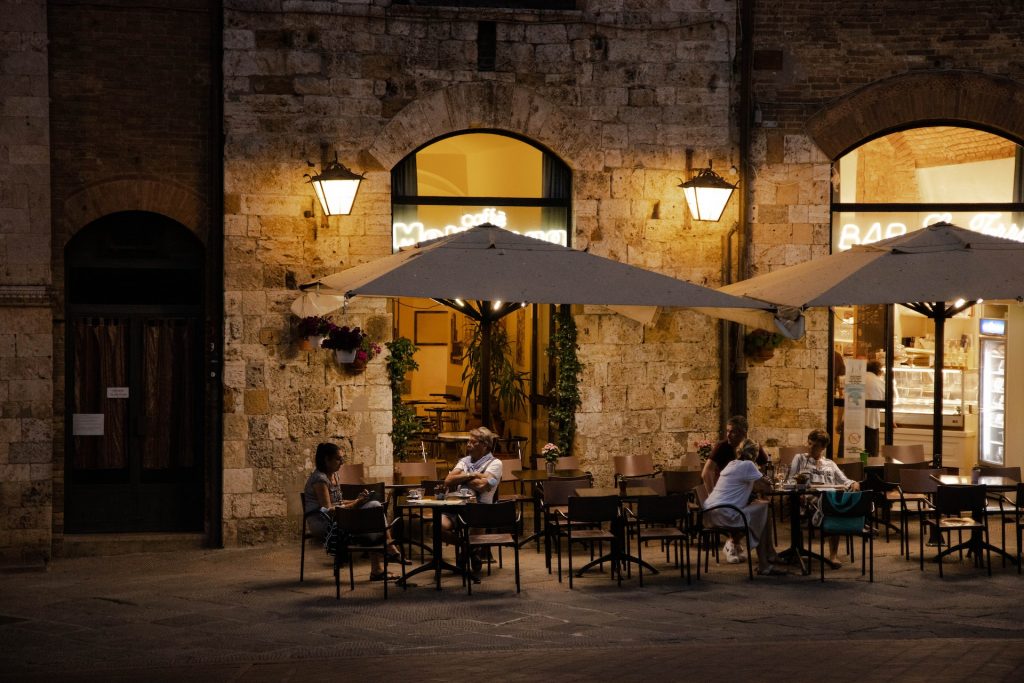Should you find yourself among people who have visited Italy and you mention “Siena,” you are likely to get a chorus of deep sighs and dreamy looks in return—and with very good reason.
It’s a place that looks almost exactly like what we picture when we imagine a historic Tuscan town, with its cobbled streets, narrow lanes, ancient walls, and miles of rolling hills in the distance.
Today, the old city center can feel downright quaint (particularly when it’s not crowded), but Siena was once an incredibly powerful European city. It’s home to the world’s oldest bank, opened in 1472 and still in operation to this day. That power and influence may be a thing of the past, but it’s the city’s former status that we have to thank for many of the sights modern visitors love.
Siena’s list of tourist attractions may not be as long as some of Italy’s other major destinations, but that’s one of the reasons that make Siena an excellent day trip from Florence.
Here are some of the top things to do in the city, a few things to eat between sights, and tips to organize your Siena day trip from Florence.
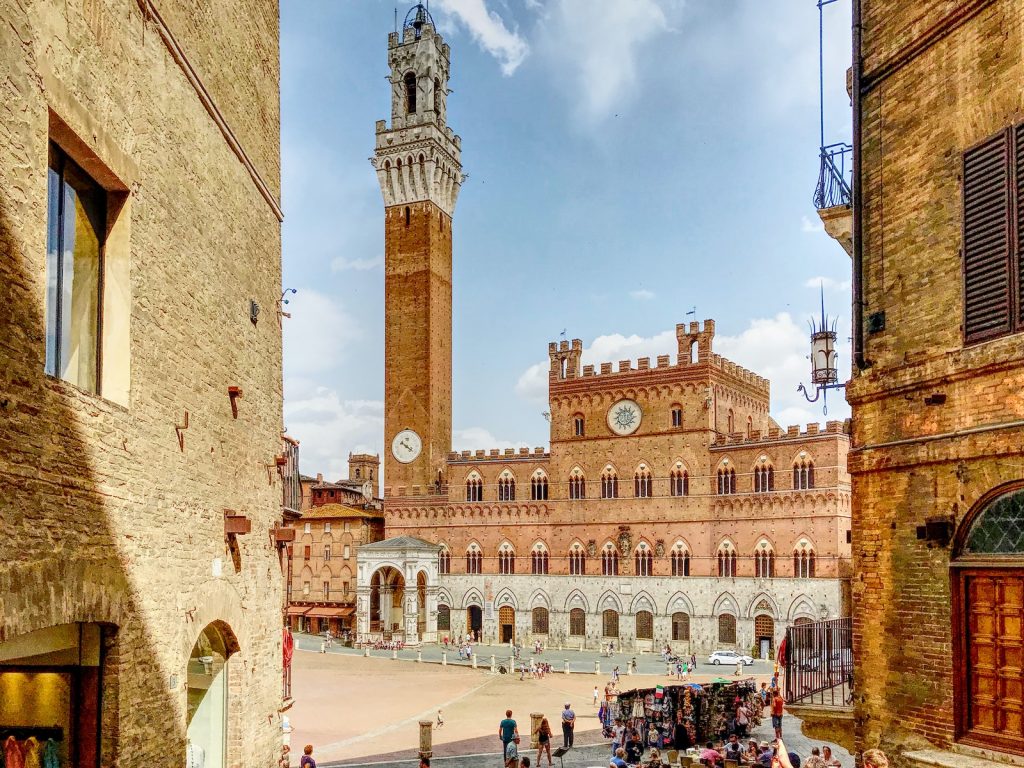
What to do & see on a day trip to Siena
Siena’s historic center—the entirety of which is a UNESCO World Heritage Site—packs a lot into a relatively small area, including all of the main attractions, which is part of what makes it such a great choice for a day trip from Florence.
_______________________
Visit the Duomo
Siena’s cathedral, which dates from the 13th century, is a layer cake of black and white marble stripes inside and out. The ornate facade gives way to an even grander interior, including massive striped columns and an intricately tiled floor.
Among the tile designs on the floor, you’ll find a circular panel with “The She-Wolf of Siena” at the center. She’s surrounded by symbols of the city’s contrade, neighborhoods that still exist today. Notable artworks in the Duomo include bronze pieces by Donatello and an early Michelangelo sculpture of Saint Paul.
The church we see today is large, but the intention in the 14th century was to expand it to twice its current size. The parts that were built remain standing, so you can better imagine how huge the cathedral would have been. There’s also a relatively new guided tour option called the “Gate of Heaven” that gives you access to the Duomo’s upper levels—rooms that were closed to the public until recently.
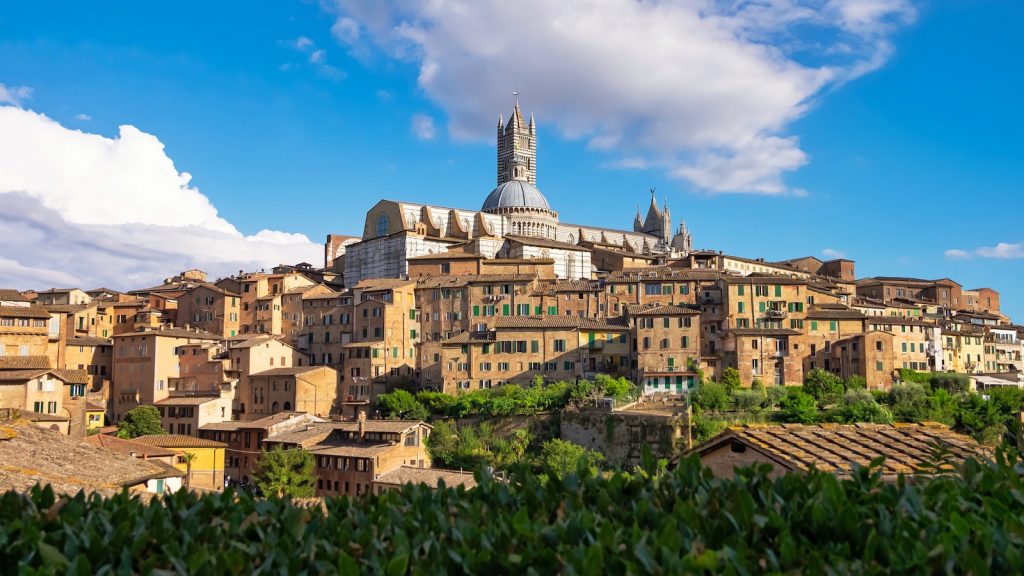
Explore the Baptistery
The site of Siena’s cathedral is on top of a hill, so the architects couldn’t put the baptistery building in front of the church, as it’s usually done—there wasn’t enough room. Instead, they built it into the foundation of the church itself. It’s underneath the eastern end of the Duomo, the opposite end from the main facade.
Because of its location, the baptistery can be easy to miss. Make the effort, though, and you’ll be rewarded with beautiful decorations that rival the cathedral’s—including a marble baptismal font that has carvings by both Donatello and Ghiberti.
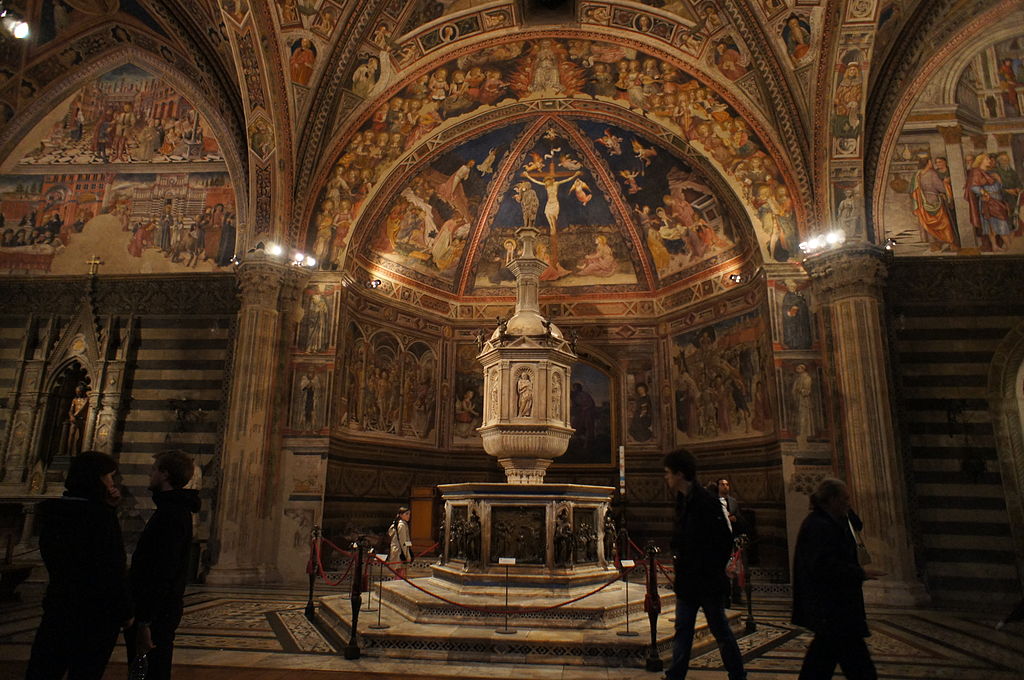
Walk around the Piazza del Campo
Unlike the main squares in most Italian cities, Siena’s main piazza is in front of the city hall rather than the cathedral. It’s also not a square. The Piazza del Campo is sort of shell-shaped, with nine triangular sections of brick fanning out from the Palazzo Pubblico (or, the city hall). This number refers to “The Nine,” the medieval rulers of Siena who governed the city when the piazza was built.
Opposite the Palazzo Pubblico, at the top of the Piazza del Campo, is a public fountain called the Fonte Gaia, built in the early 15th century. It’s decorative today, but was originally part of the city’s network of conduits bringing water into the city center.
The Piazza del Campo is the setting for Siena’s famous Palio, the bareback horse race that takes place twice each year. During the rest of the year, it’s Siena’s living room, particularly in nice weather.
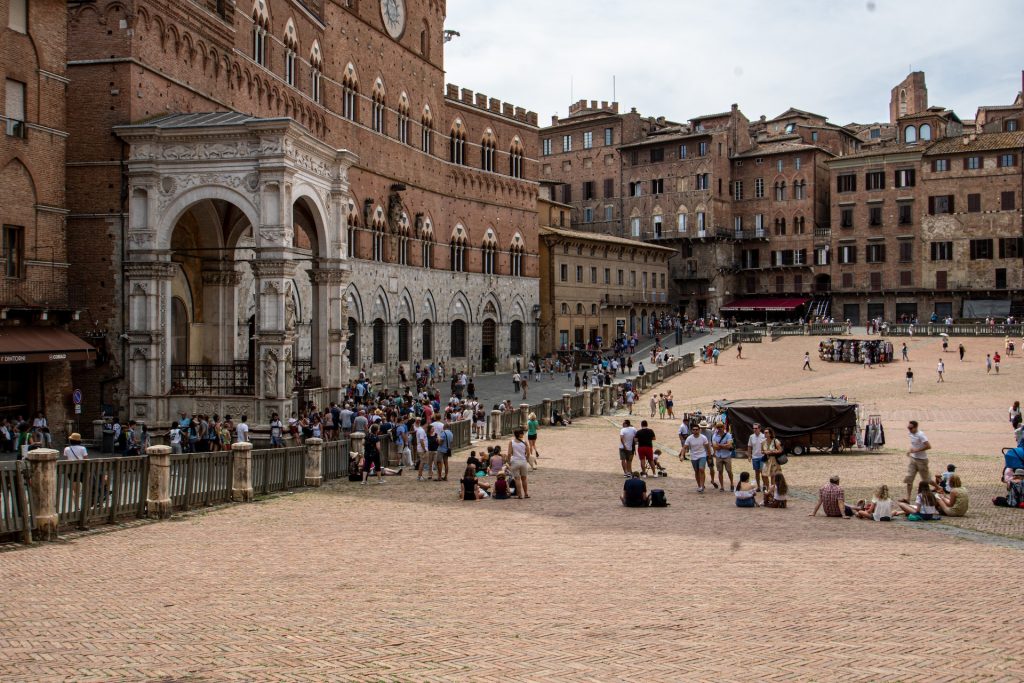
Delight yourself with the Palazzo Pubblico
The Palazzo Pubblico was built as Siena’s town hall in the late 13th century, and it remains the city hall to this day. There are some parts of the palazzo that are open to the public, however, including a Civic Museum on the first floor with fresco-covered walls. We expect frescoes in churches, but what makes many of the ones in the city hall unusual is that they depict secular scenes.
Go next door to the Torre del Mangia
The bell tower next to the Palazzo Pubblico is the Torre del Mangia, built in the mid-14th century. It was designed to be the exact same height of the city’s cathedral to signal that church and state were on equal footing.
The name means “The Tower of the Eater,” and comes from the nickname of the tower’s first bellringer—evidently, he was something of a glutton. Visitors can climb to the top of the Torre del Mangia for fabulous views over the city center and the surrounding countryside.

Museo dell’Opera del Duomo
Although Siena’s cathedral has some beautiful works of art still inside, much of the art that was once inside the Duomo is now in the Duomo’s museum. Highlights include sculptures by Donatello and Pisano, a stained glass rose window, a reliquary by Bernini, and an early 14th-century painted altarpiece.
The museum itself is housed inside the unfinished expansion of the cathedral, and there’s a window in the museum called the “Panorama e Duomo Nuovo,” from which you can get a unique view of how impressive the church would have been if the addition had been completed.
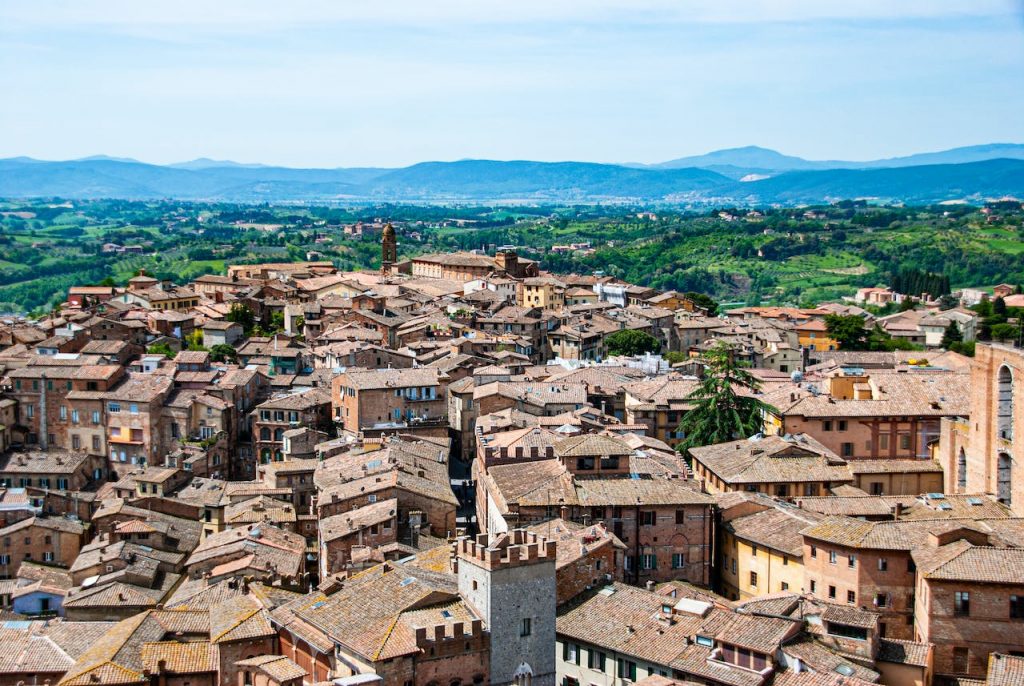
What to eat in Siena
Much of what you’ll find on menus in Siena is like what you see on menus in Florence, including bistecca alla fiorentina, legumes, wild boar, and Tuscany’s famous salt-free bread. There are some things that, although you can eat them in other parts of Tuscany, are typical of Siena. We recommend to focus on these when doing your Siena day trip from Florence, although you’ll find many extraordinary and tempting restaurants in the city.
As is the case throughout much of Tuscany, many of Siena’s culinary traditions stem from cucina povera, or peasant cuisine. For instance, while pasta isn’t especially common in Tuscany, there’s a pasta dish in Siena that turns breadcrumbs (toasted with olive oil and garlic) into a sauce for a pasta made without costly eggs: pici alle briciole. It’s humble, to be sure, and no less delicious because of that.
Tuscan cheese is a treasure, including the varieties that come from Siena (especially their pecorino; the Sienese often wrap their cheese in walnut leaves and age it in clay jars). There are also ricotta makers around Siena, plus cured meats made from Cinta Senese, a local breed of pig, that are often available as antipasti.
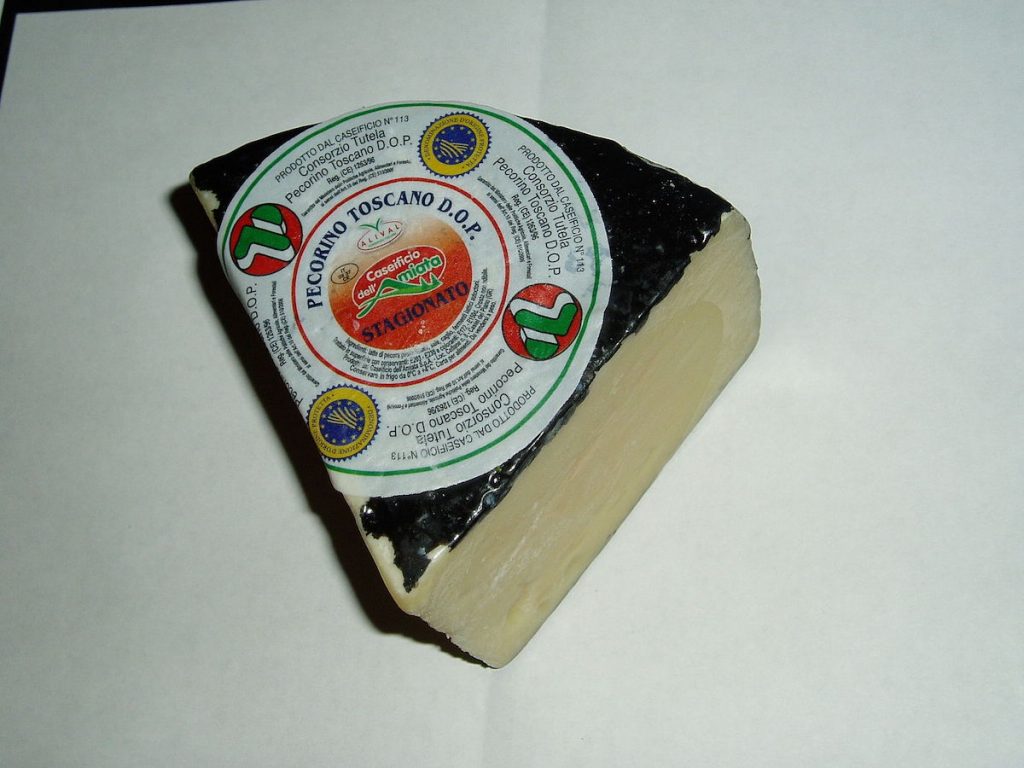
Panforte di Siena is a dense and intensely flavored dessert that’s often described as a cake—but that’s misleading. It’s heavily spiced with things like cardamom, cinnamon, and cloves and mixed with copious helpings of dried fruit and nuts.
The finished texture is more akin to something like an energy bar, which isn’t just a coincidence. Panforte (which translates as “strong bread”) has been made in Siena since at least the 13th century and was a common provision for military soldiers.
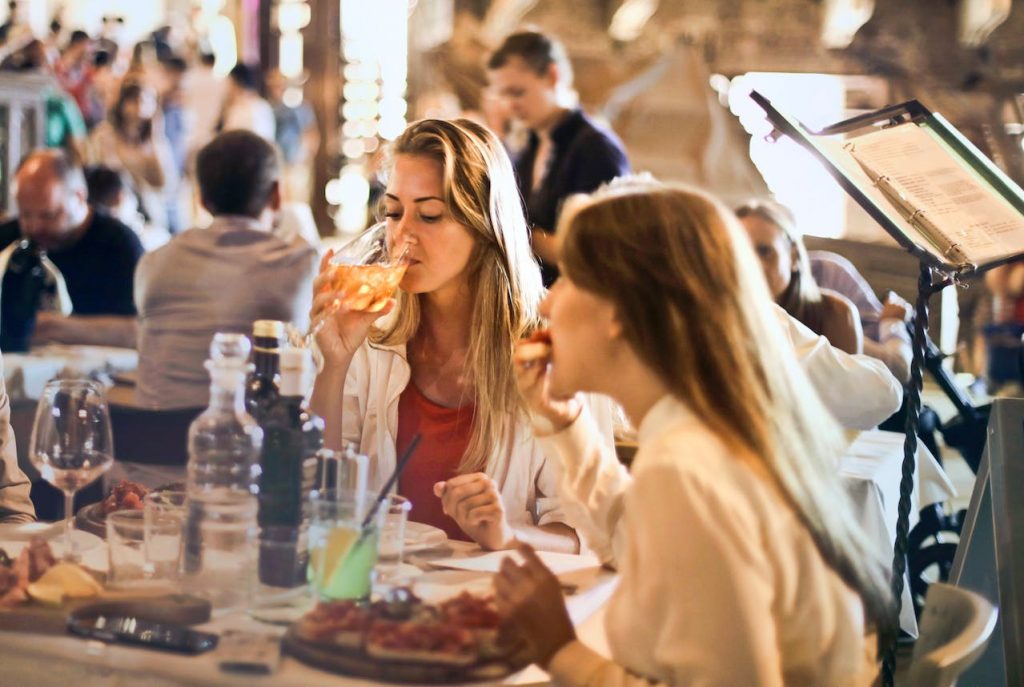
Getting to Siena from Florence
While getting around Italy by train is generally recommended for visitors, as it’s easy and inexpensive, the trip from Florence to Siena may be better done by bus, especially if you’re doing a Siena day trip from Florence directly.
Siena’s train station is outside the historic center, requiring a bus or taxi ride to get to where you want to spend the day. The bus station, on the other hand, is inside Siena’s old city walls — you leave the station and you’re a short walk from all the things you want to see. And the bus trip is usually shorter, anyway. A bus trip from Florence to Siena will generally take you a little over an hour. A train trip will take you just under two hours, plus the time it’ll take you to get to the city center.
Either taking the train or bus is infinitely easier than driving. We suggest that you skip the rental car for this day trip and just enjoy a relaxing day around Siena’s wonderful streets, squares, museums and restaurants.
Also, If you’d prefer to relax and let Take Walks plan everything, we also offer a complete Chianti, San Gimignano and Siena day trip from Florence where we take care of everything.
_______________________
